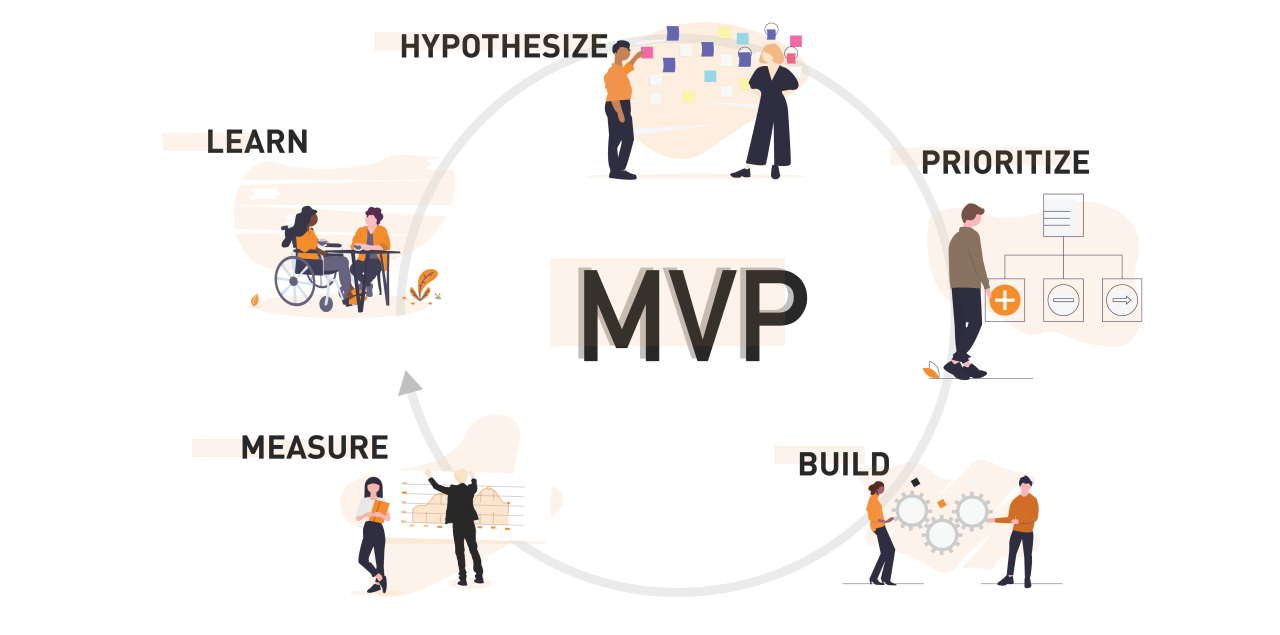Building an MVP That Actually Works: A Technical Deep Dive
Learn practical approaches to building a minimum viable product that resonates with users while avoiding common pitfalls. A technical perspective on MVP development that goes beyond the basics.

You've got an idea that's been keeping you up at night. Maybe it's the next big thing, or maybe it's just a clever solution to an annoying problem. But how do you turn that spark into something tangible without burning through your savings? That's where the MVP comes in - but not just any MVP.
What Makes an MVP Actually Viable?
Let's cut through the noise: an MVP isn't about building a stripped-down version of your dream product. That's a rookie mistake I've seen too many times. Instead, think of it as a scientific experiment. What's the one hypothesis you need to test?
According to a study by CB Insights, 35% of startups fail because there's no market need. Ouch. But you can avoid becoming part of that statistic by building an MVP that answers the right questions.
Identifying Your Core Value Proposition
Before writing a single line of code, you've got to nail down what makes your product different. Not just different - necessary. This isn't about features; it's about solving problems.
The Problem-Solution Framework
Your MVP needs to focus on one core problem. Just one. Not two, not ten - one. Why? Because complexity is the enemy of validation. Consider these questions:
- What's the specific pain point you're addressing?
- Who experiences this pain most acutely?
- What's the current workaround people use?
- Why haven't existing solutions worked?
Technical Architecture Decisions
Now we're getting into the nuts and bolts. Your architecture choices can make or break your MVP's ability to evolve.
Choosing Your Tech Stack
The best tech stack for your MVP might not be the trendiest. Focus on these factors:
- Development speed
- Team expertise
- Scalability requirements
- Maintenance costs
The Build-Measure-Learn Cycle in Practice
Building an MVP is like conducting a symphony - every piece needs to work together, and timing is everything.
Setting Up Your Measurement Framework
You can't improve what you don't measure. Set up analytics from day one. Track these metrics:
const keyMetrics = {
userEngagement: ['time on site', 'feature usage', 'return rate'],
technicalPerformance: ['load time', 'error rates', 'API response times'],
businessMetrics: ['acquisition cost', 'conversion rate', 'churn']
};
User Feedback Integration Systems
Your users are your best teachers. But how do you collect and actually use their feedback?
Building Feedback Loops
Create multiple channels for feedback:
- In-app surveys
- Usage analytics
- User interviews
- Support tickets
Cost-Effective Development Strategies
Money matters, especially in the MVP stage. Let's talk about smart ways to allocate your resources.
Resource Optimization Techniques
Consider this cost breakdown for a typical MVP:
| Component | Percentage of Budget | Priority Level |
|---|---|---|
| Core Features | 60% | High |
| Infrastructure | 20% | Medium |
| Testing | 15% | High |
| Marketing | 5% | Low |
Scaling Considerations from Day One
While you shouldn't over-engineer your MVP, some scaling considerations need to be addressed early.
Database Architecture Planning
Your data model needs to be flexible enough to evolve. Consider using a schema-less database for rapid iterations.
Security Fundamentals for MVPs
Security isn't optional, even in an MVP. But you can be smart about what you prioritize.
Essential Security Measures
Focus on these non-negotiable security elements:
- User authentication
- Data encryption
- Input validation
- Regular backups
Testing Strategies for Quick Validation
Testing doesn't have to slow you down if you do it right.
Automated Testing Framework
Implement these testing levels:
- Unit tests for core features
- Integration tests for critical paths
- End-to-end tests for main user flows
Launch Preparation Checklist
Getting ready for launch? Here's what you need to cover:
- Server infrastructure setup
- Monitoring tools implementation
- Backup systems
- Emergency response plan
Post-Launch Analysis Framework
After launch, you need to know what's working and what isn't.
Key Performance Indicators
Track these metrics religiously:
- User acquisition rates
- Feature usage patterns
- Error rates
- Customer feedback sentiment
Frequently Asked Questions
Q: How long should it take to build an MVP? A: Typically 3-4 months for a software MVP, but it varies based on complexity and requirements.
Q: What's the minimum budget needed for an MVP? A: For a software MVP, expect to invest $15,000-$50,000, depending on features and complexity.
Q: Should I use no-code tools for my MVP? A: No-code tools can be effective for certain types of MVPs, especially if you're validating market fit before investing in custom development.
Q: How do I know when my MVP is ready to launch? A: Your MVP is ready when it can effectively test your core value proposition and provide meaningful user feedback.
Q: What's the biggest mistake people make when building MVPs? A: Adding too many features and losing focus on the core problem they're trying to solve.
Q: How much should I invest in marketing my MVP? A: Initially, invest 20-30% of your development budget in marketing to ensure you reach your target users.
Conclusion
Building an MVP is a balancing act between speed, quality, and learning. Focus on validating your core assumptions first, and don't get distracted by nice-to-have features. Remember, an MVP is about learning, not perfection.
Recommended Services
- MVPAgency - Full-service MVP development and strategy
- AWS Startups - Cloud infrastructure for startups
- MongoDB Atlas - Database solutions for rapid development

